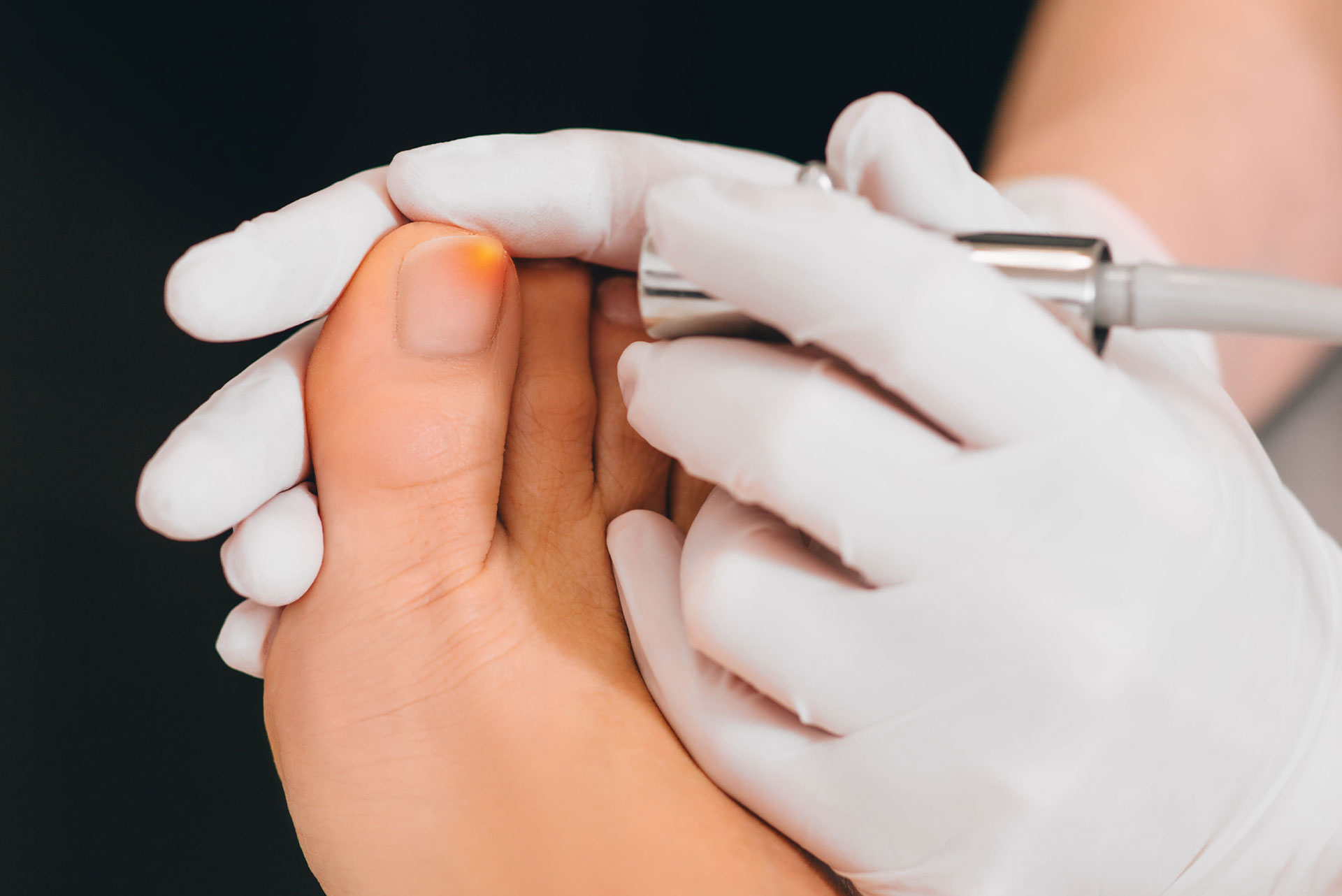
Fungal nail infections are very common in adults and account for nearly half of all nail disorders. Technically known as onychomycosis, fungal nail infections can affect both your fingernails and toenails, but are most frequently seen in the toes. While the infection is a slow-growing one, a nail fungus can eventually cause the overlying nail to discolor, thicken, change texture, become increasingly brittle, break and even detach from the nail bed.
Left untreated an increasingly disfigured toenail can cause discomfort and irritation, especially while wearing shoes or walking. Not only that, fungal nail infections can spread to the other nails. If a diseased toenail breaks, it can also pierce the skin thereby allowing bacteria to enter, which can lead to a more serious type of infection. This is especially dangerous for individuals who have diabetes or a compromised immune system.
For all of these reasons, it is a good idea to give our office a call at the first sign of any discoloration, thickening or deformity of your toenails. Although a fungal nail infection can often be identified by its appearance, other conditions can produce a similar look, and an accurate diagnosis is essential for proper care. One thing is for certain; you can rest assured that our office will consider every aspect of your case in determining the best approach to care. Furthermore, we offer the most effective methods of care including the latest generations of topically applied medications, oral antifungal drugs, laser and surgical procedures.
Click here to learn more about KeryFlex Nail Restoration System.
